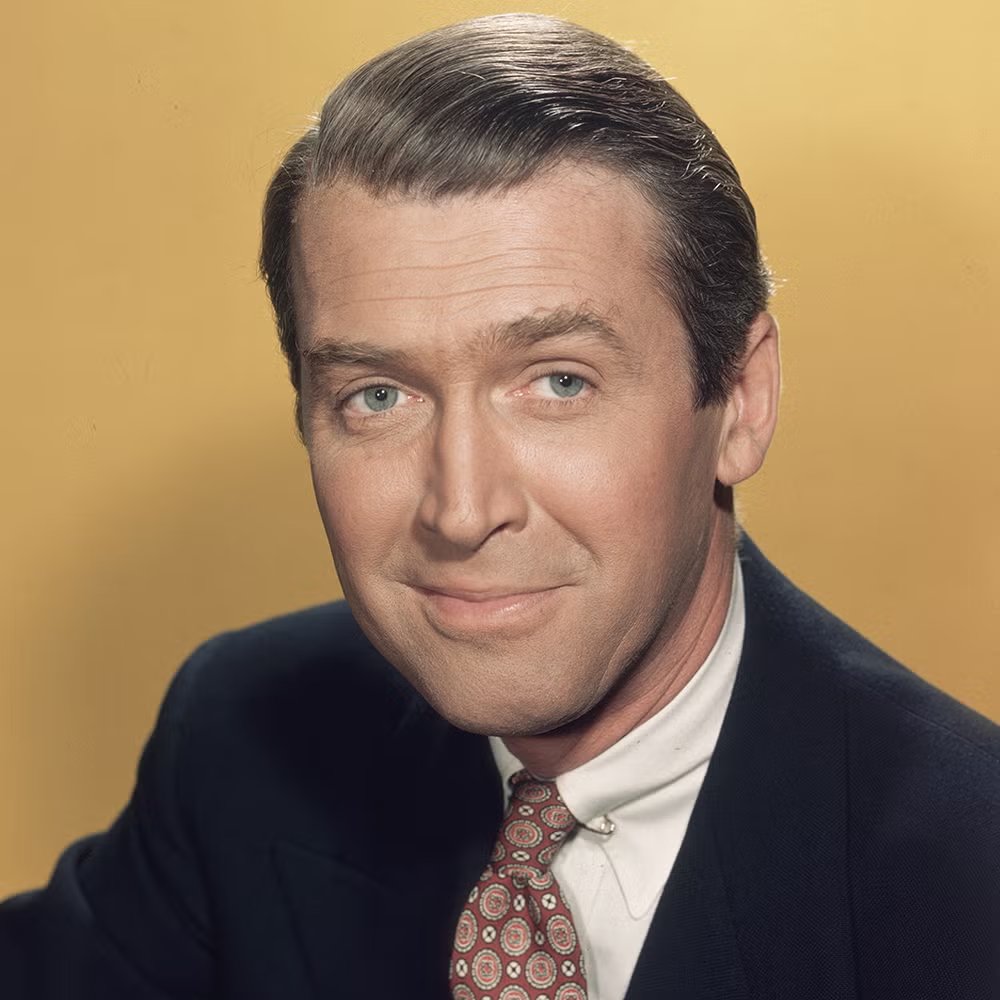
Table of Contents
Who Was Jimmy Stewart?
James Maitland Stewart, known as Jimmy Stewart, made his film debut in The Murder Man (1935) alongside Spencer Tracy. Early in his career, he was loaned to Columbia Pictures for two pivotal Frank Capra films: Mr. Smith Goes to Washington (1939), which earned him his first Oscar nomination, and It’s a Wonderful Life (1946), which has since become a beloved Christmas classic.
Early Life
Stewart was born and raised in the small town of Indiana, Pennsylvania, where his father operated a hardware store. His interest in performing began at a young age. While attending Princeton University, Stewart participated in the Triangle Club, which produced theatrical performances. He graduated in 1932 with a degree in architecture, but never pursued a career in the field. Instead, he joined the University Players in Falmouth, Massachusetts, where he met lifelong friend Henry Fonda. That same year, Stewart made his Broadway debut in Carrie Nation, though the show did not achieve success. Nevertheless, Stewart found further stage opportunities before signing a movie contract with MGM in 1935.
Film Career
In Hollywood, Stewart initially shared an apartment with Henry Fonda. His early roles included the 1936 musical Born to Dance, in which he co-starred with Eleanor Powell. His first major career breakthrough came with Frank Capra’s You Can’t Take It With You (1938), which won the Academy Award for Best Picture and cemented Stewart’s star status.
Stewart’s portrayal of a young, idealistic senator in Mr. Smith Goes to Washington (1939) earned him his first Academy Award nomination. The following year, he won the Oscar for his performance in The Philadelphia Story (1940), a romantic comedy starring Katharine Hepburn and Cary Grant.
From 1941 to 1946, Stewart paused his acting career to serve in World War II. He joined the U.S. Army Air Corps (later the U.S. Air Force) and eventually rose to the rank of colonel. After the war, Stewart returned to the screen with It’s a Wonderful Life (1946), directed by Capra. Though initially a box-office failure, the film became a cherished holiday classic, and Stewart later described it as one of his favorite roles.
In the 1950s, Stewart’s career took a turn toward more complex roles. He starred in Harvey (1950), a whimsical story about a man with an imaginary friend, but soon sought grittier material, particularly in Anthony Mann’s westerns Winchester ’73 (1950) and Broken Arrow (1950). Stewart’s collaborations with director Alfred Hitchcock, beginning with Rope (1948), are among his most celebrated. Hitchcock’s Vertigo (1958) is regarded as one of both the director’s masterpieces and Stewart’s finest performances. Stewart also received critical acclaim for his role in Anatomy of a Murder (1959), directed by Otto Preminger.
Final Years and Death
In the 1970s, Stewart made two attempts at television series. He starred in The Jimmy Stewart Show (1971–1972), a sitcom, and later in the drama Hawkins (1973), though neither show lasted long. During this period, Stewart also appeared in films, including the 1976 western The Shootist, alongside John Wayne, Lauren Bacall, and Ron Howard.
In the 1980s, Stewart received numerous tributes for his distinguished career, including an honorary Academy Award in 1984 for “his high ideals both on and off the screen.” By the 1990s, Stewart had largely retreated from public life, particularly after the death of his wife, Gloria, in 1994. Married since 1949, the couple had twin daughters and two sons from Gloria’s previous marriage. Stewart’s devotion to his family and his image as a man of integrity added to his revered status.
Stewart’s final years were marked by poor health, and he passed away on July 2, 1997, in Beverly Hills, California. Though he is no longer with us, his films continue to inspire new generations of actors and remain a cornerstone of American cinema. His warmth, humor, and timeless charm have left an indelible mark on popular culture.
